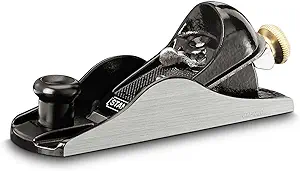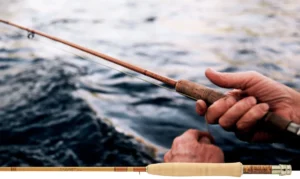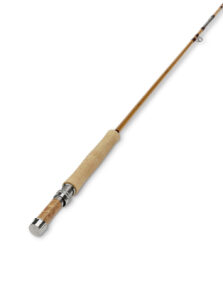
Key Takeaways
-
A taper is the profile that dictates the performance characteristics of a bamboo fly rod.
-
Quality bamboo is essential for a strong, resilient, and responsive rod.
-
The Payne 100 and Garrison 206 are among the most revered tapers for their delicate presentation and versatility, respectively.
-
Leonard 38 and Thomas & Thomas Caenis tapers are notable for specific fishing conditions and techniques.
-
DIY rod makers need the right tools and techniques to handcraft a bamboo fly rod successfully.
The Art of Selecting Bamboo Fly Rod Tapers
When we talk about tapers, we’re referring to the precise contour of the rod’s cross-section from the butt to the tip. This taper affects how the rod casts, how it feels in your hand, and how it delivers the fly to the fish. A well-chosen taper can mean the difference between a good day on the water and a great one.
What Are Tapers and Why They Matter
A taper is the gradual thinning of the bamboo rod from its thicker butt end to its slender tip. The way the bamboo is shaped along this gradient will influence the rod’s action – whether it’s fast or slow – and its ability to present a fly with precision. A taper is not just a single measurement; it’s a series of measurements at different points along the rod’s length, creating a profile that is unique to each rod design.
When it comes to crafting a bamboo fly rod, the taper is not just a detail; it’s the blueprint that shapes your fishing experience. Choosing the right taper is crucial because it determines the rod’s flexibility, strength, and overall performance. Think of it as the rod’s DNA – it’s that important.
Whether you’re an experienced angler or just starting, understanding tapers is the first step to building a rod that feels like an extension of your own arm.
Characteristics of Quality Bamboo for Fly Rods
Before we get into the specifics of tapers, it’s crucial to understand the bamboo itself. The best bamboo for fly rods is called Tonkin cane, which grows primarily in the Guangdong province of China. This bamboo is prized for its high density, fiber strength, and natural power fibers that run the length of the cane. These characteristics are essential for a bamboo rod because they dictate how well the rod will perform and last over time.
Top Tapers for Your Bamboo Fly Rod Project
With a rich history stretching back over a century, certain bamboo rod tapers have stood the test of time. These tapers are loved by anglers for their proven performance and have been passed down through generations of rod makers. Let’s look at some of the best tapers that you might consider for your custom rod.
The Classic Payne 100 Taper for Delicate Presentations
The Payne 100 taper is legendary for its delicate presentations and is ideal for the angler who enjoys dry-fly fishing on serene streams. Its action is medium-fast, which means it’s flexible enough to offer a smooth casting experience but still has the backbone to handle larger fish.
Taper data for the Payne 100 7.5 Ft 4 Wt rod:
|
Station |
Dimension (in) |
|---|---|
|
0 |
0.064 |
|
5 |
0.070 |
|
10 |
0.086 |
|
15 |
0.101 |
|
20 |
0.116 |
|
25 |
0.131 |
|
30 |
0.143 |
|
35 |
0.155 |
|
40 |
0.167 |
|
45 |
0.180 |
|
50 |
0.191 |
|
55 |
0.203 |
|
60 |
0.218 |
|
65 |
0.231 |
|
70 |
0.244 |
|
75 |
0.269 |
|
80 |
0.301 |
This table presents the taper data for the Payne 100 rod, including the station measurements and their corresponding dimensions in inches. Source: https://www.hexrod.net
Garrison 206: The Choice for Versatility
If you’re looking for a rod that can do it all, the Garrison 206 taper should be on your radar. It’s a versatile taper that’s equally at home casting dry flies as it is nymphs or streamers. The Garrison 206 has a medium action that’s been described as a perfect balance between power and grace.
Taper data for the Garrison 206 7ft 6in 5wt
|
Station (in) |
Dimension (in) |
|---|---|
|
0 |
0.059 |
|
5 |
0.078 |
|
10 |
0.100 |
|
15 |
0.117 |
|
20 |
0.131 |
|
25 |
0.144 |
|
30 |
0.156 |
|
35 |
0.168 |
|
40 |
0.181 |
|
45 |
0.194 |
|
50 |
0.206 |
|
55 |
0.220 |
|
60 |
0.233 |
|
65 |
0.247 |
|
70 |
0.260 |
|
75 |
0.275 |
This table presents the dimensions in inches. Source: https://www.hexrod.net
Breaking Down the Leonard 38 Taper
Another taper that commands respect among bamboo rod enthusiasts is the Leonard 38. This taper is designed for those who appreciate a faster action in their rod, providing crisp and accurate casts. The Leonard 38 shines in situations where you need to punch through wind or deliver a fly at a distance, without sacrificing the finesse bamboo rods are known for.
|
Station (in) |
Dimension (in) |
|---|---|
|
0 |
0.074 |
|
5 |
0.088 |
|
10 |
0.101 |
|
15 |
0.114 |
|
20 |
0.129 |
|
25 |
0.142 |
|
30 |
0.154 |
|
35 |
0.159 |
|
40 |
0.170 |
|
45 |
0.185 |
|
50 |
0.203 |
|
55 |
0.214 |
|
60 |
0.229 |
|
65 |
0.241 |
|
70 |
0.250 |
|
73 |
0.271 |
This table presents the dimensions in inches at each station. Source: https://www.hexrod.net
Pursuing Perfection with the Paul Young Perfectionist Taper
For those who seek a classic feel with a touch of modern performance, the Paul Young Perfectionist taper is a standout. This taper has a smooth, progressive action that loads deeply, providing power for longer casts while still being capable of the lightest presentations. It’s a taper that demands a refined casting technique but rewards the angler with unmatched elegance and control.
|
Station (in) |
Dimension (in) |
|---|---|
|
0 |
0.066 |
|
5 |
0.090 |
|
10 |
0.106 |
|
15 |
0.116 |
|
20 |
0.132 |
|
25 |
0.142 |
|
30 |
0.158 |
|
35 |
0.184 |
|
40 |
0.202 |
|
45 |
0.218 |
|
50 |
0.223 |
|
55 |
0.229 |
|
60 |
0.241 |
|
65 |
0.249 |
|
70 |
0.261 |
|
75 |
0.272 |
|
80 |
0.277 |
This table presents the dimensions in inches at each station. Source: https://www.hexrod.net
Tools of the Trade: Essential Gear for DIY Rod Makers
As you embark on the journey of crafting your own bamboo fly rod, you’ll need a set of specialized tools to shape and finish your creation. These tools are as important as the bamboo itself, as they will determine the precision and quality of your work.

https://www.genuinebellinger.com/store/genuine-bellinger-planing-form.html
The Perfect Planing Form
The planing form is the foundation of your rod-making process. It’s a metal device that guides your hand plane as you shape the bamboo strips to the desired taper. A high-quality planing form is adjustable, allowing you to set it to the exact measurements of your chosen taper, and it must be rigid enough to maintain those settings throughout the planing process.

Knife Selection for Precision Cutting
When it comes to cutting bamboo strips, the right knife can make all the difference. You’ll want a knife that’s sharp, precise, and comfortable to hold. A well-crafted bamboo splitter and a sharp block plane are essential for creating consistent strips that will form the basis of your rod.
A good knife not only cuts cleanly through the bamboo but also helps you maintain control over the thickness and straightness of your strips. This precision is crucial when it comes to fitting the strips together to form the hexagonal rod blank.
Shaping Your Strips: Tapering Made Simple
Once you have your strips, it’s time to start shaping them to match your chosen taper. This is where your planing form comes into play. You’ll adjust the form to the taper’s specifications, then carefully plane each strip so that it tapers from the butt to the tip, just like the form. It’s a meticulous process, but when done correctly, it ensures that your rod will have the action and feel that you’re aiming for.
Remember to measure twice and cut once. Consistency is key here – any variation in the taper can lead to a rod that’s off balance or doesn’t cast as it should. Precision is your best friend.
Binding the Strips: Creating a Cohesive Shaft
With all strips tapered, it’s time to bind them together. You’ll apply your chosen adhesive to the strips and bind them tightly together using a string or specialized binding machine. This step is critical because it ensures that the strips form a solid, unified rod blank. The adhesive needs time to cure, so patience is once again a virtue. The result should be a strong, straight blank that’s ready for the next steps.
FAQs
As we wrap up this guide to creating the perfect bamboo fly rod, let’s address some frequently asked questions that might be on your mind.
Can I Make a Bamboo Fly Rod as a Complete Beginner?
Absolutely. Crafting a bamboo fly rod is a journey of learning and skill-building. While it’s a complex process, beginners can certainly embark on this rewarding project with the right guidance and patience.
Start by choosing a simpler taper and practicing on some test strips before you tackle your final piece. There are many resources available to help you learn, including books, videos, and even workshops.
-
Begin with research and study the process thoroughly.
-
Invest in quality tools and materials.
-
Don’t rush the process – take your time to learn each step.
With dedication, you can create a bamboo fly rod that you’ll be proud to fish with.
How Long Does It Take to Make a Handcrafted Bamboo Fly Rod?
The time it takes to make a bamboo fly rod can vary widely depending on the maker’s skill level and the complexity of the rod. For a beginner, expect to spend at least 40-60 hours spread over several weeks or months. As you gain experience, you may find that you can complete a rod in less time, but the process should never be rushed. The joy is in the journey, and the quality is in the attention to detail.
Are There Any Books or Resources to Help Me Get Started?
There are many excellent resources available for aspiring rod makers. “A Master’s Guide to Building a Bamboo Fly Rod” by Everett Garrison and Hoagy B. Carmichael is considered the bible of bamboo rod making. Other resources include:
-
Online forums and communities where experienced rod makers share their knowledge.
-
Workshops and classes offered by experienced rod builders.
-
Videos and tutorials that can guide you through the process step by step.
Equip yourself with knowledge, and don’t hesitate to reach out to the rod-making community for advice and support.





